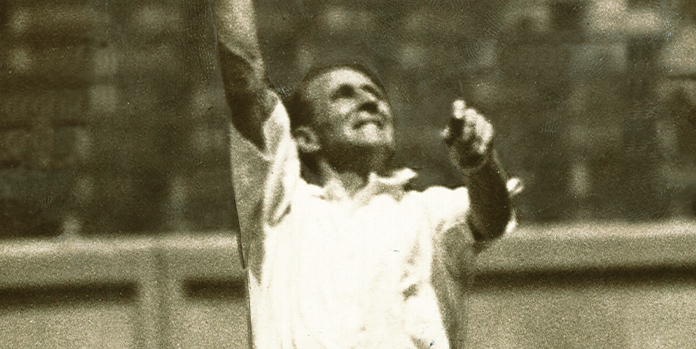This article was written by Thomas Amarasekara, Year 10.
When Novak Djokovic won the Australian Open (AO) Tennis men’s singles title this year, he received $2.975 million in prize money. Looking back 100 years ago, when Pat O’Hara Wood (OM 1910) won the men’s singles at the 1923 Australasian Championship (as the AO was then known), he received no prize money. In fact, O’Hara Wood received not a penny for any of his six Australian titles, as he was an amateur playing for the love of the game.
A life of achievement
Pat was a strong contributor to Melbourne Grammar School – he was a school prefect; he received academic honours in Greek, Latin, algebra, geometry and trigonometry; he was a member of the games committee, the First XI cricket team, the First XVIII football team, the dramatic club, the cadet corps and, of course, the First IV tennis team.
After completing his education at the School, O’Hara Wood commenced law at the University of Melbourne before enlisting in the Australian Light Horse in 1915, serving at both Gallipoli and France in WWI.
Following the war, O’Hara Wood returned to tennis, winning the Australasian men’s singles in 1920 and 1923, and the mens’ doubles in 1919, 1920, 1923 and 1925. He also won two Wimbledon titles (men’s doubles in 1919 and mixed doubles in 1922) and represented Australia in the Davis Cup team three times (1920, 1922 and 1924).
Pat’s elder brother Arthur O’Hara Wood (OM 1908) was also a promising tennis player, but unfortunately died in France while on active service in WWI, and did not get to enjoy Pat’s success.
Amateur vs. professional
In O’Hara Wood’s era, tennis was divided into two groups: amateurs like O’Hara Wood who played International Lawn Tennis Federation (ILTF) tournaments like the Australian Open and Wimbledon without prize money, and professionals who were paid by sponsors for their appearances but were not allowed to play in ILTF tournaments. Frustrated by the lack of prize money in amateur tennis, O’Hara Wood eventually turned professional in 1930 and became the official coach to the Lawn Tennis associations of Australia and Victoria and the (Royal) South Yarra Tennis Club.
O’Hara Wood married a fellow Australian amateur tennis player, Meryl Aitken Lister, née Waxman. He died in 1961 at the age of 70.
While O’Hara Wood played tennis in a very different era and conditions relative to today’s champions, he remains known as one of the forefathers of modern Australian tennis. Similarly, we can consider him to be one of the forefathers of Melbourne Grammar School’s long history of producing fine tennis players with bright futures both on and off the court.



